- Las Chelemeras is a group of 18 women in the Mexican port town of Chelem who, since 2010, have worked to restore and protect their local mangrove forests on the northern coast of the Yucatán Peninsula.
- To date, they have contributed to the reforestation of approximately 50 hectares (124 acres) of mangroves, accounting for half of Chelem’s forest cover.
- “We have learned that our work is not only a job or a paycheck, but a collaboration with the environment, and that gives us satisfaction,” says Keila Vazquez, a founding member of the group.
- In an interview with Mongabay, Vazquez talks about her work with Las Chelemeras, the challenges ahead for her community, and how the reforestation of their environment has impacted younger generations.
CHELEM, Mexico — In Mexico’s Yucatán Peninsula, a few words describe the most common occupations: fisher, merchant, mother. Over the past decade, the port town of Chelem has seen the emergence of a new line of work. Starting in 2010, a group of 18 local women, many of them descended from the Maya, have undertaken the conservation and restoration of their local mangrove forests. They call themselves Las Chelemeras.
Located 51 kilometers (32 miles) north of the city of Mérida, Chelem borders some 100 hectares (247 acres) of red and black mangrove trees, where crocodiles, crappies and kingfishers abound among a menagerie of native species. In recent decades, however, an outsized push for tourism and urban development has caused the deterioration, and in some cases deforestation, of the surrounding mangrove ecosystem. In Chelem, the construction of an industrial port in 1969 artificially connected the coastal lagoon to the sea. Later, dredging for highways caused severe deterioration by obstructing the flow of lagoon water to the trees. It wasn’t until 2010 that Chelem, its mangroves and its lagoon were decreed a natural protected area within the Wetlands and Mangroves of the North Coast of Yucatan State Reserve.
The Yucatán Peninsula, which encompasses the Mexican states of Campeche, Yucatán and Quintana Roo, is home to Mexico’s largest expanse of mangrove trees, estimated at around 544,000 hectares (1.3 million acres). Still, nearly half of these mangroves remain unprotected. Even areas that do benefit from environmental management are up against the near-constant problem of land-use change.
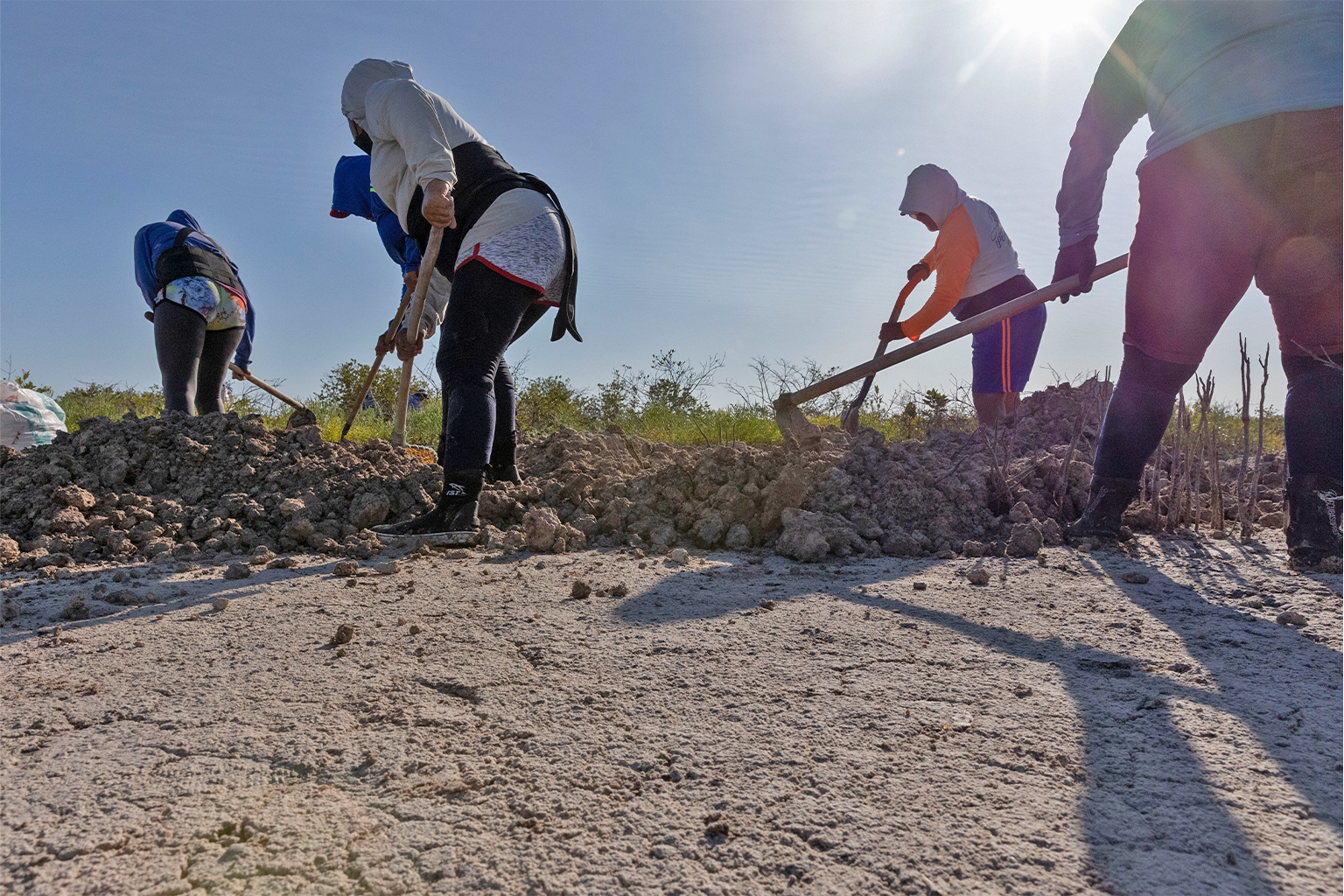

By helping the lagoon to recover its natural topography, Las Chelemeras have contributed to the reforestation of approximately 50 hectares (124 acres) of mangrove across two sites, first in the port of Yucalpetén and now in the port of Progreso. Together, the two sites comprise around half of Chelem’s current forest cover. Though full reforestation may take decades, Las Chelemeras have already noticed a diversity of bird nests, hatchlings and snails in the mangroves — encouraging signs that their approach is working.
A typical workday entails building canals and clearing existing waterways so that fresh groundwater can enter deforested or degraded areas. Near surviving natural mangrove nurseries, Las Chelemeras build small barriers out of wood posts and mesh so that the seedlings stay and root, rather than wash out to sea. This method means that to reforest their mangroves, Las Chelemeras have not planted a single seed.
With two restoration sites to their name, Las Chelemeras are motivated to expand their reach. Financing is temporary and sporadic, however; their labor is funded through a mix of grants, donations and foreign investment. The pair of Mérida-based biologists who started the project and administer it, Jorge Herrera of the Center for Research and Advanced Studies (CINVESTAV) and Claudia Teutli of the National Autonomous University of Mexico’s National School of Higher Education (ENES), routinely seek and apply for the resources to support Las Chelemeras’ work.

For the small towns along the Yucatán Peninsula’s Gulf of Mexico coast, the conservation of forest cover has a marked and lasting impact on both the local community and the environment. Hurricanes are annual events that are projected to increase in both frequency and intensity due to climate change. The loss of mangroves has left inhabitants more vulnerable to storms and rising sea levels. It has also limited marine resources available to fishers. In addition to storing “blue” carbon, mangroves provide shelter for humans and wildlife and serve as important fish nurseries while sustaining the economic activities of the population — including Las Chelemeras.
Forty-three-year-old Keila Vazquez, an original member of Las Chelemeras, says she likes that their group name represents both people and place. In Maya, the word chelem can refer to a type of bird and also a type of plant, but Chelemera implies that this peculiar new trade of mangrove restoration was born in Chelem. This way, Vazquez says, others will “identify us as the hardworking women from Chelem.” According to the women, Chelem is just the starting point for what they hope grows into more support and funding opportunities for environmental labor across the region.
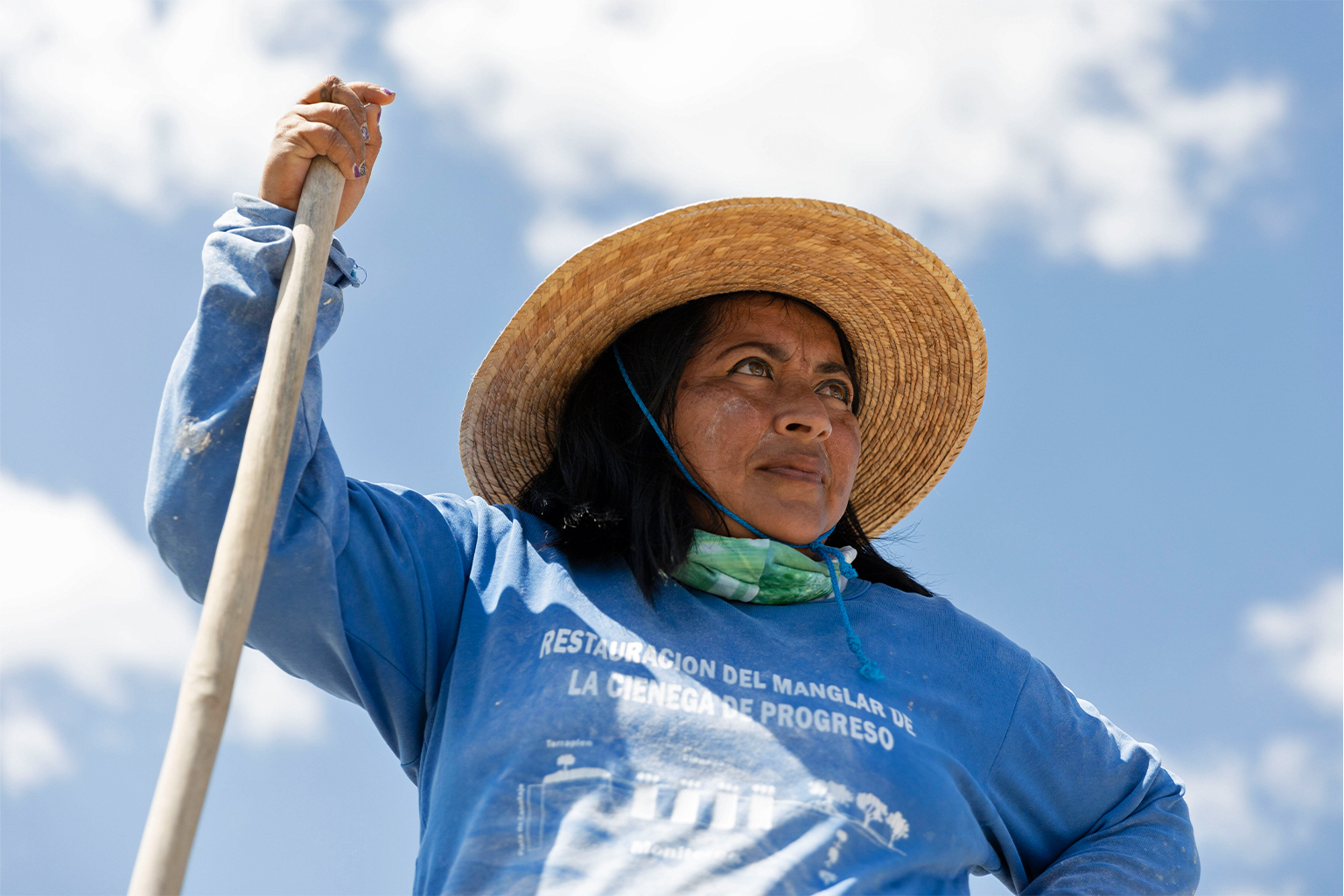
Mongabay recently visited the Chelem mangroves to speak with Vazquez about her work with Las Chelemeras, the challenges ahead for her community, and how the reforestation of their environment has impacted younger generations. The following interview has been translated from Spanish and lightly edited for length and clarity.
Mongabay: Traditionally, women have worked to support the fishing industry in Chelem and throughout Yucatán. What got you interested in conservation work?
Keila Vazquez: In the beginning, we didn’t know the contribution our work was making to the environment. For us, [restoring the mangroves] was more of an income opportunity than anything else. But as time went by, we became more interested in the work because we started to see how we were actually collaborating with the environment. And now, we know the purpose of the work, why the mangroves are good for us … that, in fact, this is about the environment, about fishing, about climate change, about hurricanes. That [mangroves] serve as barriers against hurricanes and help to protect the population. The mangroves have so many functions that really make us proud of the work we are doing.
Mongabay: When did Las Chelemeras start working in the mangrove and when did you formalize your organization?
Keila Vazquez: Las Chelemeras have existed as a group for eight years, but we have been working for approximately 12 or 13 years. All the same members — there is one man, only one. But yes, most of us are women.
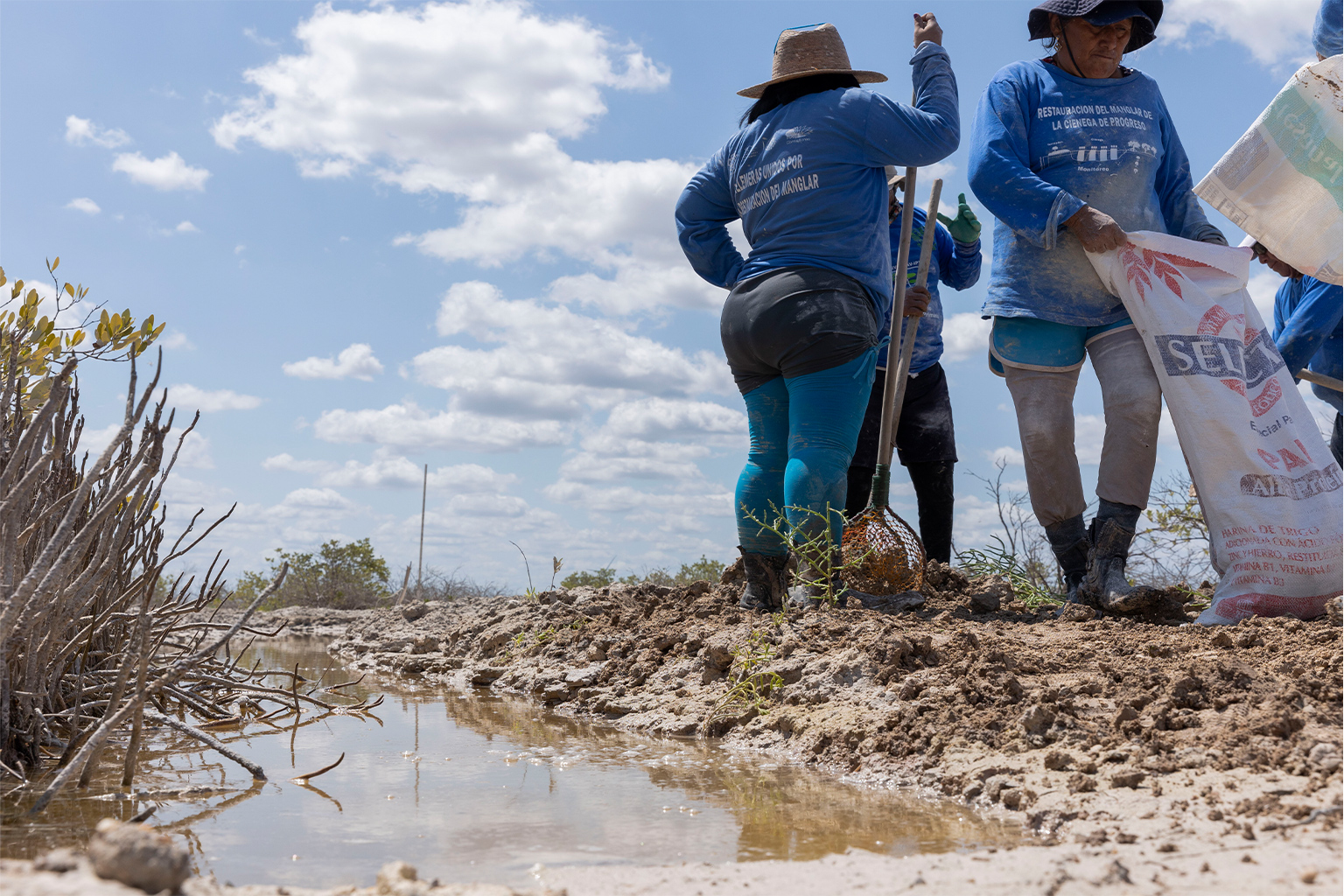
Mongabay: What was the condition of the mangrove when you started restoring it? What about the animals and fish that live there?
Keila Vazquez: The first day, honestly, we had no idea what we were getting ourselves into. Previously, several of Las Chelemeras had done work for other, let’s say, experiments aimed at restoring the areas we work in, and we saw that they hadn’t worked. Because the whole thing was born out of economic need, we just said, “Well, here’s another experiment. Why not?”
But this one was different. [The biologists] told us, “You have to make trenches, 3 meters by 60 meters long [10 by 200 feet].” We were surprised, thinking, “Why do they want us to do that? For what?” Well, after two, three days of making trenches, we started to see how the water sprang up in a place that was totally dry. Seriously, it did not have water before. At that point, you get a little bit more excited and you keep working just to see what happens.
Mongabay: How many sites have you restored as a group and how have those sites changed since you started working on them?
Keila Vazquez: Two — Yucalpetén was our first site. That’s where all our learning began, so to speak. It used to be a place where cars passed by and all you could see was a desert. Now they can drive by and see the mangroves. We were told that the area had too much accumulated salt. So no matter how much they planted, the seed would not survive because the area had too much salt. By creating these channels and connecting them to the groundwater, freshwater flowed in, swirled around and drained back out, washing away all of the excess salt. This same process introduced seeds that were in the lagoon. That’s how the mangrove seeds started to settle and stay.

Mongabay: And then what happened? How much did the site recover?
Keila Vazquez: How long did it take to start seeing the first results? One year. The thing is, [the plants] grow very slowly. It’s not like you do the work and it’s done. It requires a process of constant follow-up, of not abandoning [the site]. You have to keep checking every so often, reconstructing it after inclement weather. It’s a job that never ends.
To see animals return, it took us about two to three years for the saplings to grow into trees, because the birds won’t make nests otherwise. The same for the fish, they also have to have enough roots to make their little coves. So this takes from two to three years, depending on the inclemency of the weather and the way the seeds adapt to the site. Nothing is the same in one place as in another.
Mongabay: How do you go about growing and planting the mangroves? What other work do you do to care for them?
Keila Vazquez: Our work is less about planting and more about recovering damaged areas and dead, dry areas. Areas that have served as a dumping ground for sand or any variety of toxic things that cause the area to die. Our job is to recover the land and leave it fertile so that the seeds feel like they can live there for a long time.
[When there is no paid work] we go two at a time or in shifts to keep an eye on the site and see what is needed for the next time there is funding. So that when there are resources, we already have an idea of what the work will entail, what we can improve or what the biologist might suggest. For example, [the biologists] tell us, “Look, this or that is what we are going to do.” But they also ask us, ‘What do you, the ones who live here, think of this?” They have their ideas, but we share our ideas as well.

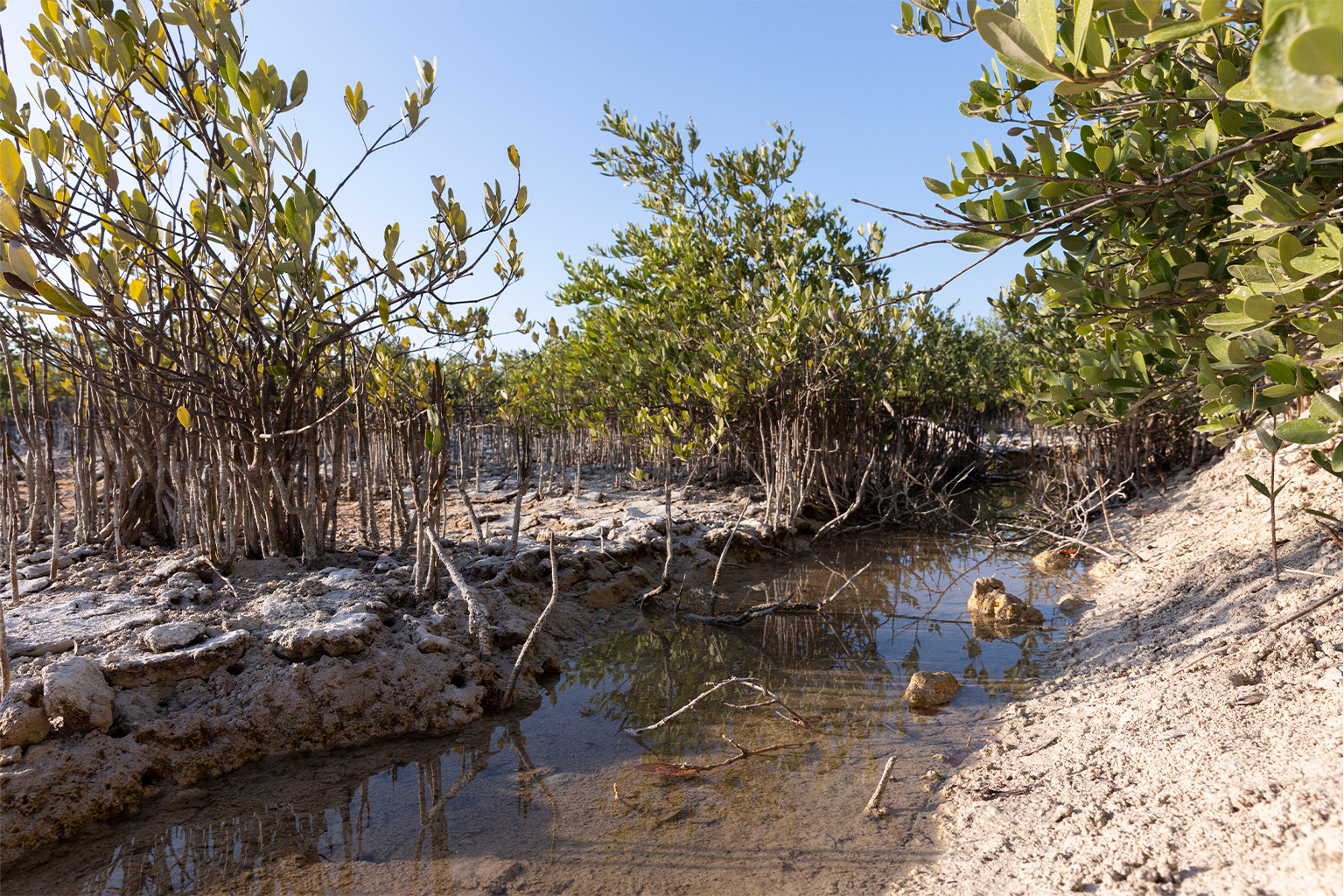
Mongabay: Is taking care of the mangrove your full-time occupation? Who pays you? Does the income cover your family’s needs?
Keila Vazquez: The work in the mangrove is [financed] a few times a year. But yes, I have another job. I am a merchant and I take time off for this kind of [restoration] work. But I also have other obligations. [Editor’s note: Vazquez owns a small convenience store.]
Most of the women who are in this group, I think we stay in the group because we have something in common. They are hardworking women, who fight for their family, who have liked doing one job or another. And when we found this work, I don’t think we ever imagined we would stay so long. I believe that this group will remain a group forever, because we like the work, that’s why we got used to it, we were not afraid of the manual labor. And I repeat, we have learned that our work is not only a job or a paycheck, but a collaboration with the environment, and that gives us satisfaction. Our families have also learned and continue to learn about this.
Mongabay: Las Chelemeras is a unique name. In a way you’re claiming agency or responsibility for the place you are from. How would you explain this name to someone who has never been here?
Keila Vazquez: We named ourselves Las Chelemeras so that everyone knows that we are from this town, that we are from Chelem and that we are women trying to conserve the local mangrove, to start, at least.
Our elders used to tell us that chelem meant a stalk, more or less like a plant, which, I don’t think it even exists anymore … I’ll leave it to you as homework.
Mongabay: What have Las Chelemeras learned about the value of your work? How have your perceptions about women’s work changed?
Keila Vazquez: Not only have the women in this group learned things about our work, things related to the mangrove, but we have also seen our character change.
We have had confrontations, we have been like a family, we have fought, we have cried, but it means that we are a strong group because in spite of everything, we are the same members. We are still together, we have learned to tolerate each other as people. We have learned that everyone can express what they feel and what they think. We have been able to learn to divide our time between our home and our obligations at work. We realized that we can carry quite a workload. And we like it. We like the people we have learned to be.

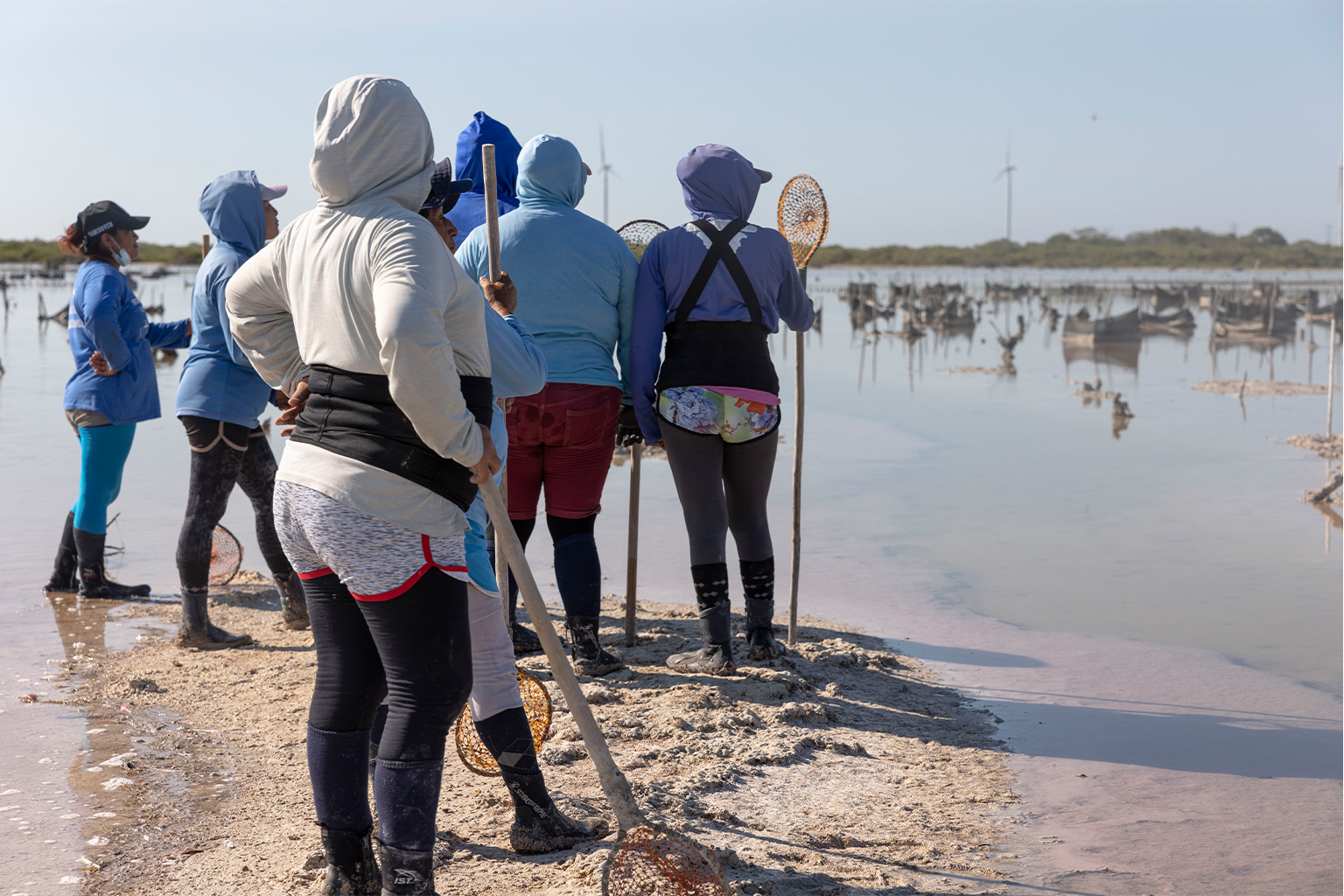
Mongabay: How do you think your community needs to adapt to sustain the ecosystem and fishing value chain?
Keila Vazquez: Personally, I would like if the community had a little more information. Information in our schools on behalf of our local government … to teach the fishermen, the housewives and everyone the importance and value of what we have around us … If only more fishermen knew that thanks to the mangroves, species hatch and reproduce more easily. Or if everyone who lives near the mangroves didn’t destroy them for firewood or to build a house. First and foremost, because they live in vulnerable areas. And secondly, because they are destroying our barriers against hurricanes. So, more than anything else, what we lack, in this town and in many others, is information.
Frankly, people survive from fishing, they depend on tourism. If we have beautiful mangroves, people come to see the birds. With that, there are more job opportunities. But if the mangroves are ugly or destroyed, how are the birds going to come? Or if there is no food for those birds? For example, we have flamingos around here. How are they going to come? It’s all connected: mangroves, species and jobs.
Mongabay: What was the biggest factor leading to the degradation of the second restoration site in Progreso? And what are the biggest risks to its recovery?
Keila Vazquez: In both sites it was the deposit of sediments from places where they had dredged the land. For example, Yucalpetén was a sheltering port for fishing boats. They dredged it to have the depth needed by those vessels, and all that waste was deposited in the sites where we work. The accumulation of all that was what raised the elevation of the site. And at the other site, which is the rowing dock in Progreso, it was the same thing. They dredged everything so that an area that used to be a river would be deeper.
I don’t know who is in charge of dredging and all that, but we have spent so much time in those places that the ugliest thing would be for them to dredge again and cause the same damage. That they’d say, “Oh, well, we’re going to dump there again because it’s a swamp, after all.” The ugliest thing would be if they didn’t think about the consequences.
[Editor’s note: The sites’ inclusion in the Wetlands and Mangroves of the North Coast of Yucatan State Reserve provides protection, though enforcement tends to be weak in Mexico. The reserve received Ramsar designation in February 2022, which may enhance protection.]
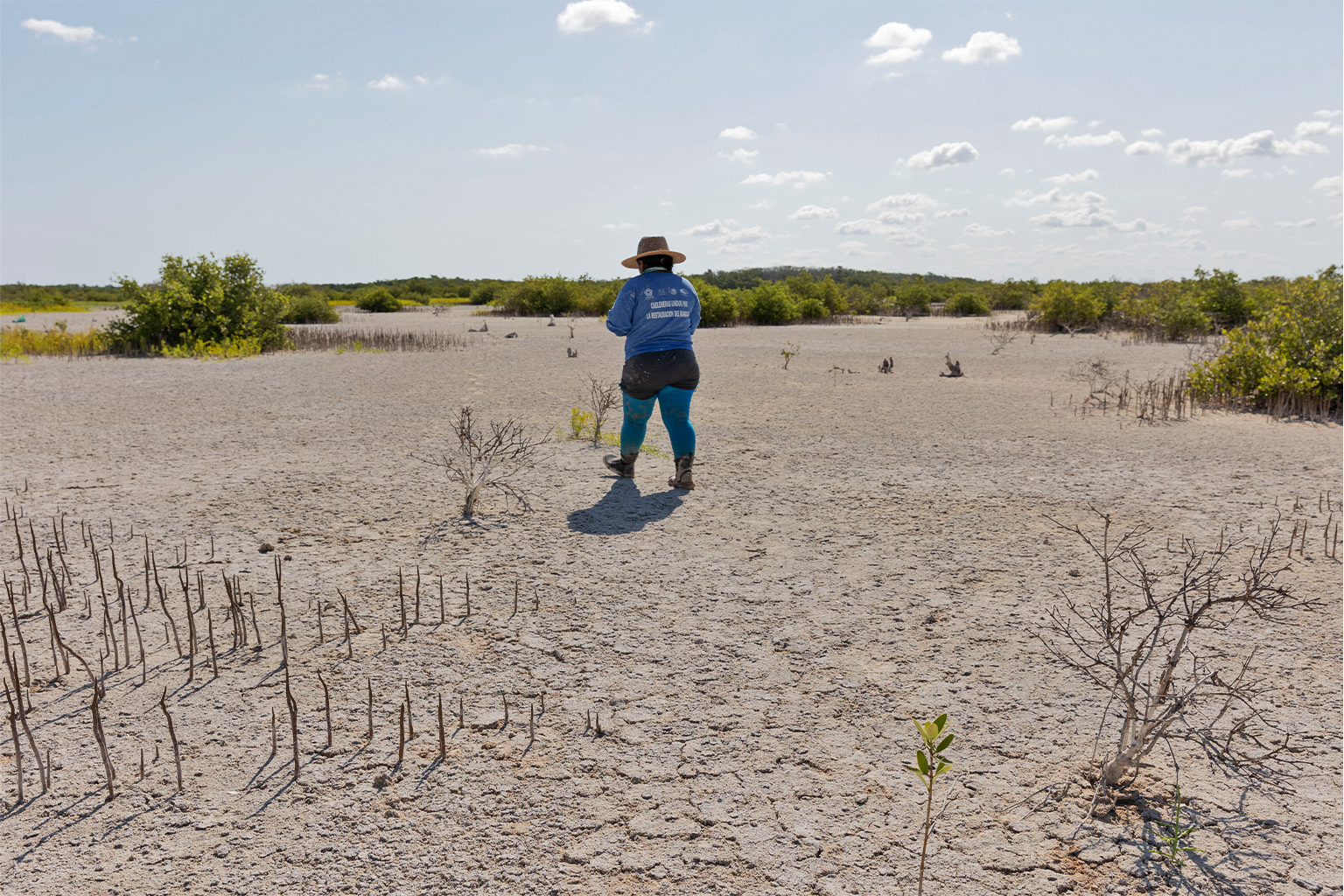
Mongabay: What are your future goals as a group?
Keila Vazquez: Our long-term goal would be to pass the benefits on to us as a community. To see that the area recovers 100%, because it will take many, many years. We would also like to have, for example in our work area, a place for people to come and visit, so that people can appreciate all our work.
Mongabay: Can you tell me about an experience you had in the mangrove that was important to you?
Keila Vazquez: I don’t know if I would call this a specific experience, but, imagine, day after day of making canals, lifting mud, walking for I don’t know how long and with great difficulty in that mud. Transporting it to be deposited far away. All of this over time. Two, three years of that work. When we see, more than anything, the plants blooming. It’s like when you see that your children have achieved something and you say “Wow, what I am doing is worth it, I am going to keep on doing what I am doing, even if it hurts,” sometimes because of so much effort. But it really is worth it, the satisfaction of seeing how those plants bloom.
Mongabay: Do you have children, do they participate in mangrove restoration, fishing, working or playing in the mangroves?
Keila Vazquez: I have three children, two girls and a boy. And yes, my kids and those of several Chelemeras have participated, they know about our type of work. At times they have accompanied us on our workday and they themselves are surprised by the things we mothers do. And yes, sometimes they ask to go [to the mangrove], a niece or nephew. Since we have been working for 12 or 13 years, an 8-year-old child will now explain to you what the mangroves are and what they are for, and we have really benefited from this.
Mongabay: What challenges do Las Chelemeras face?
Keila Vazquez: As a group, we would be sad or angry if people just didn’t care about so much dedication, so much work. It’s not easy. It is true that it takes years of work, but also a lot of investment. Financial support for a place, for nature, whatever you want to call it, is not easy to secure. That suddenly someone would arrive and destroy everything overnight … more than anything, it would make us angry.
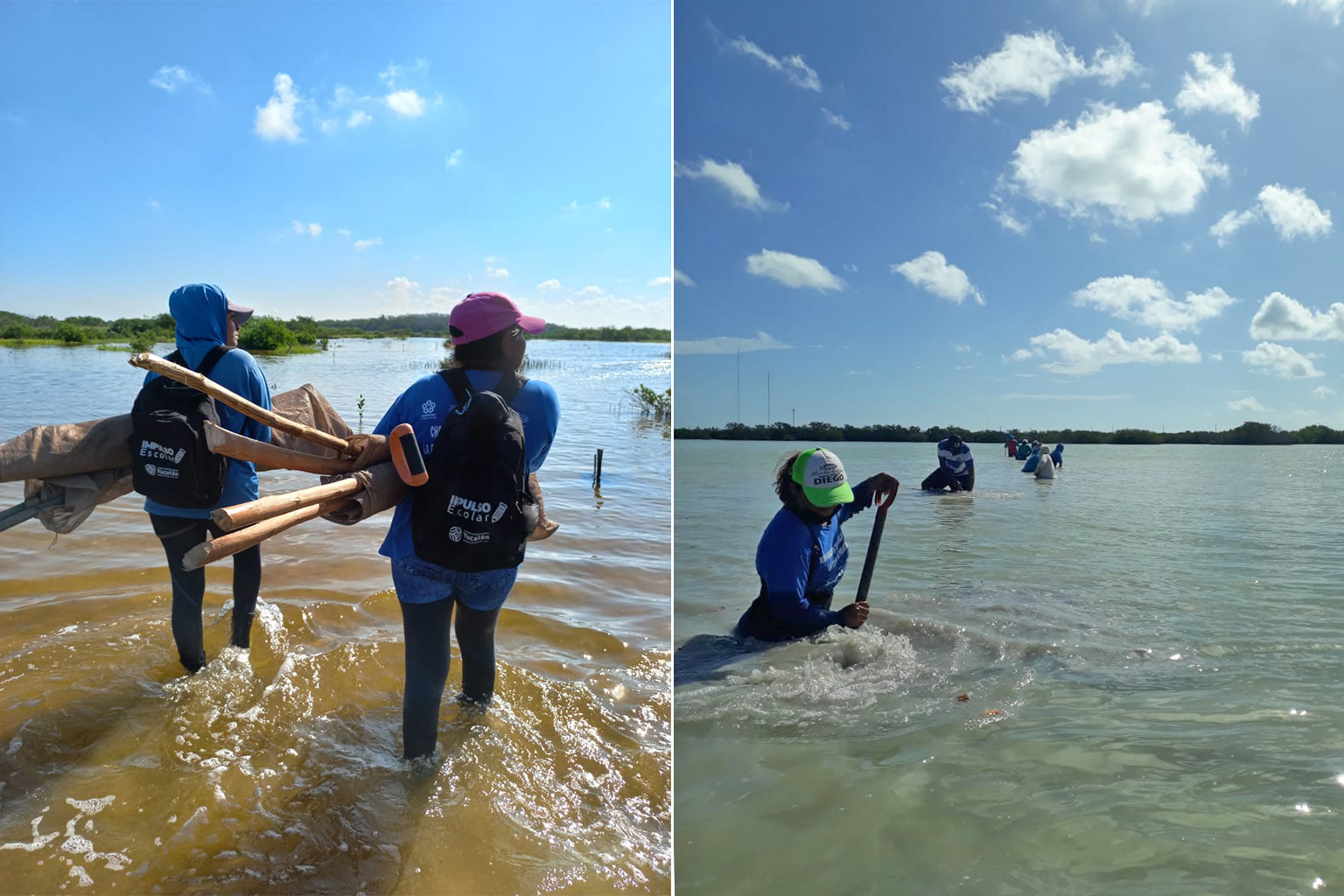
Banner image: Members of Las Chelemeras consult with Keila Vazquez (in hat) before continuing their work. Image by Caitlin Cooper for Mongabay.
FEEDBACK: Use this form to send a message to the editor of this post. If you want to post a public comment, you can do that at the bottom of the page.
